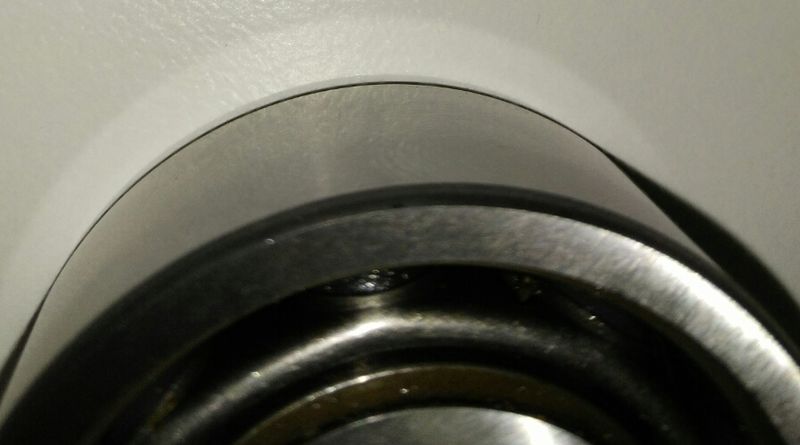Although the topic of IMS bearings has been well covered over many years, I thought it might be worth sharing my experiences of a failing LN ceramic bearing in a 2001 Boxster. In this case, an LN Engineering dual row retrofit had been installed in the car in 2011 by a previous owner at around 80,000kms (50k miles).
An oil and filter change at around 140,000km (88k miles) – 6 years after installation – revealed ferrous debris in the filter. I put the car on stands and removed the transmission and flywheel – assuming that somehow the ‘new’ bearing had failed.
On removing the IMS flange, I found slight play in the bearing, but that it was intact.
On removal of the bearing, I found that apart from the slight play and a ‘rough’ feel, the bearing was otherwise in reasonable shape. On closer inspection however, it was apparent that one of the 18 ceramic balls was heavily pitted across most of its surface, with fissures where it seems the surface layer of the ball had flaked away. None of the other 17 balls in the double-row bearing were damaged. However, the inner and outer steel races contacted by the pitted ball had been worn away to some extent, causing debris in the oil filter.
It seems that this damage was the result of a random manufacturing defect limited to just one particular ceramic ball.
Some observations:
- Being a LN bearing, the outer seal was not fitted. The bearing had a lot of oil in it upon removal and it would seem that lack of lubrication was not a factor.
- The absence of the outer seal would presumably have allowed oil to quickly wash debris out of the bearing, probably limiting damage to the other other bearing row.
- As a dual row bearing, lack of much wear to the other (unaffected) row meant that the bearing would have continued to operate reasonably well for some time before failing completely.
- The washing out of particles as soon as wear began to occur would have meant that visible evidence of debris in the filter (and caught on a magnetic sump plug, had there been one) was obvious at an early stage (ie, potentially much earlier than if both seals were present).
- On the same lines, early washing out of metal particles may have meant those particles were larger and more likely to be captured by the oil filter than if they were trapped in the bearing and ground up into a fine abrasive paste.
- The absence of any other wear to the bearing suggests that without this one faulty ceramic ball, the bearing might otherwise have lasted the life of the car.
- Although popular advice suggests that once a bearing starts to disintegrate it’s too late to save the engine without a full teardown, that’s not my experience here. An engine oil flush and filter change and the engine appears to be as good as ever. However, this may not be the case where the original bearing is disintegrating with its seals intact – in that case, by the time there are large enough particles to be seen in the filter, there may be many more finely ground ones that may have slipped through and are circulating freely. This suggests to me that removing the outer seal of an original bearing is a minimum maintenance requirement.
- Ceramic ball bearings are still subject to unpredictable wear. Given LNE advise to replace their retrofit bearings at 75k miles or 6 years, using a standard steel bearing (I replaced the LN ceramic bearing with an off-the-shelf SKF 3204 bearing) and replacing them at the same frequency is probably just as good.
The photo is my attempt to show the one failed ceramic ball - the pits on the surface of the ball can be seen here (I haven't disassembled the bearing as it's now the paperweight on my office desk!)
Cheers
David
